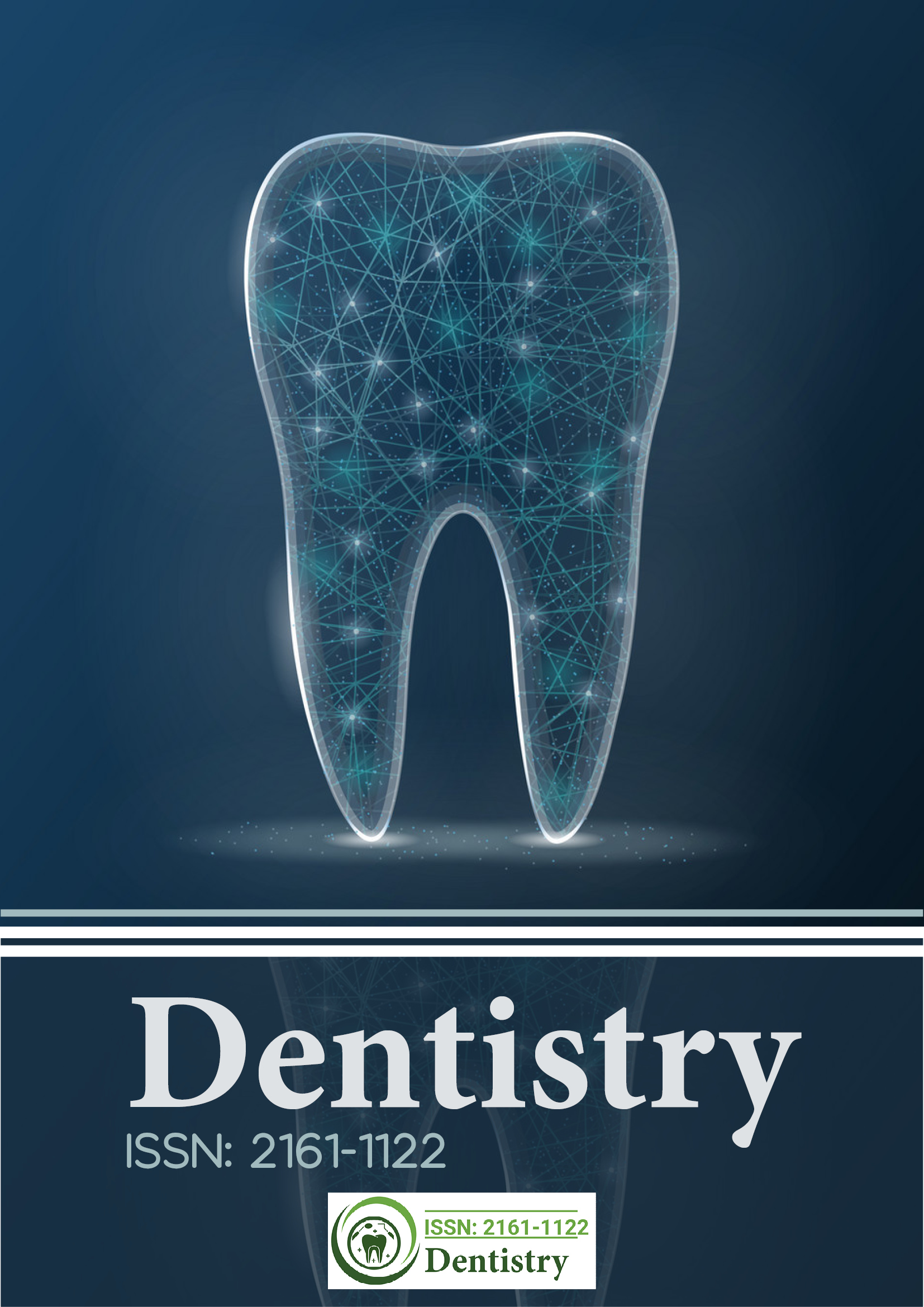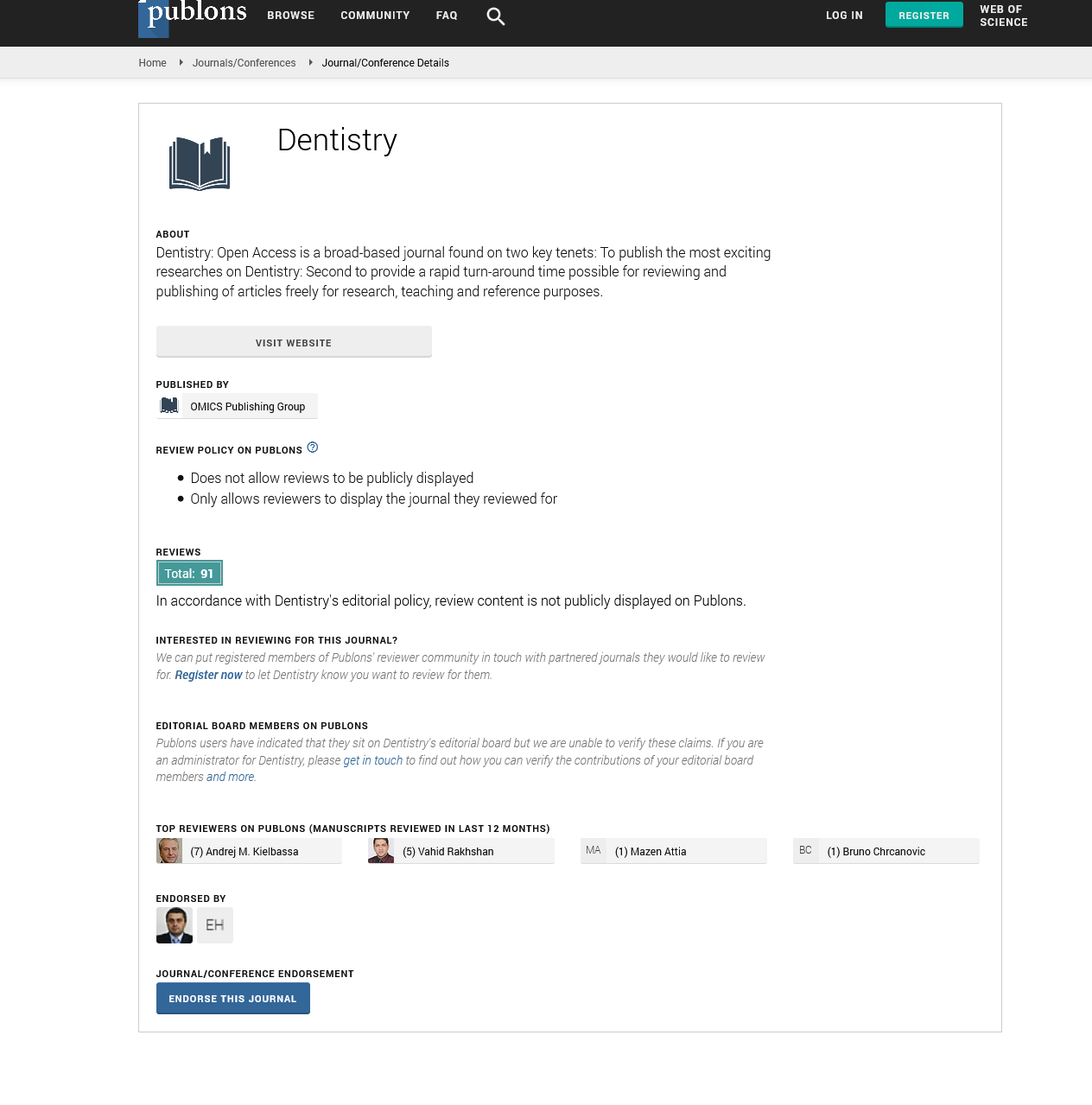Citations : 2345
Dentistry received 2345 citations as per Google Scholar report
Indexed In
- Genamics JournalSeek
- JournalTOCs
- CiteFactor
- Ulrich's Periodicals Directory
- RefSeek
- Hamdard University
- EBSCO A-Z
- Directory of Abstract Indexing for Journals
- OCLC- WorldCat
- Publons
- Geneva Foundation for Medical Education and Research
- Euro Pub
- Google Scholar
Useful Links
Share This Page
Journal Flyer

Open Access Journals
- Agri and Aquaculture
- Biochemistry
- Bioinformatics & Systems Biology
- Business & Management
- Chemistry
- Clinical Sciences
- Engineering
- Food & Nutrition
- General Science
- Genetics & Molecular Biology
- Immunology & Microbiology
- Medical Sciences
- Neuroscience & Psychology
- Nursing & Health Care
- Pharmaceutical Sciences
How perceived-case-complexity could affect your orthodontic treatment decision
Joint Event on 30th International Conference & Exhibition on Dental Medicine & Dental Implants & 5th Annual Summit on American Dental Science and Education
July 20-21, 2018 | Atlanta, USA
Sercan Akalycin
Tufts University, USA
Posters & Accepted Abstracts: Dentistry
Abstract:
How perceived-case-complexity could affect your orthodontic treatment decision. Individual assessment of the orthodontic treatment need can be quite subjective and may vary depending on expertise and level of dental specialty education. Patients seeking orthodontic care have the good perception of dental esthetics, strong motivation, and an objective treatment need. All of these factors have a strong impact on the treatment demand. Therefore, treatment providers should be fully competent in their assessments. The necessity to treat dental and skeletal imbalances with orthodontic therapy can objectively be measured using different occlusal indices. While Dental Aesthetic Index (DAI) and the Index of Complexity, Outcome, and Need (ICON) are some of the popular ones, Discrepancy Index (DI) developed by the directors of the American Board of Orthodontics (ABO) has primarily been used in the United States. Since successful orthodontic treatment is highly correlated with a correct diagnosis and proper execution of an accurate treatment plan. Using patient records and evaluations, attempts were made to investigate the relationship between orthodontic treatment complexity and perceptions of orthodontists with other indices. However, use of DI in this regard has been limited. In this presentation, the audience will be introduced to the use of DI as it relates to identifying the case complexity. Furthermore, possible relations between perceived orthodontic treatment complexity and the DI in a panel group comprised of orthodontists, general dentists, orthodontic residents, and dental students will also be discussed.
Biography :
E-mail: sercan.akyalcin@tufts.edu

